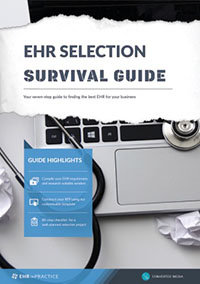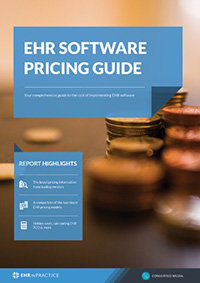How to set a budget for a small practice EHR
In recent years, small practices have experienced a challenging competitive landscape, which, in turn, has resulted in more small practices consolidating to remain economically viable. The symptoms of this difficulty for small practices can be seen in the last AMA Physician Practice Benchmark Survey conducted in 2016, which shows for the first time since the survey began less than half of practicing physicians owned their practice (47.1 percent). Further, practice size continued to increase with 61 percent of physicians working in practices with 10 or fewer physicians compared to 57.8 percent in 2012.
Given these market conditions for small practices, survival depends on maintaining revenue streams and managing costs. For small practices creating a sound budget with EHR technology in mind is important to remain financially viable.
Why following a strict budget matters for small practices
Small practices may find themselves in any number of scenarios whereby they are creating an EHR budget. These scenarios may involve forecasting a total EHR replacement, upgrading an existing EHR, or building a budget forecast for an existing system. Under any of these scenarios, it is essential to make certain an EHR budget provides an accurate picture of all potential costs and benefits that flow from an EHR.
Things to consider when making budget allocations
The following provides a few tips for small practices to consider when constructing an EHR budget.
Beware of hidden costs
A budget trap small practices encounter involve hidden EHR costs. Research indicates that the long-term costs of an EHR system can vary up to 200 percent depending on the type and scale of the system. Therefore, one of the goals of budgeting for costs should involve being able to accurately account for variance in cost. Hidden costs are best described as costs which are overlooked or may only arise under certain unforeseen circumstances. As such, a budget should consider all possible scenarios in which costs may arise over the short-term and long-term.
Check out our comprehensive EHR budget and cost guide to create your EHR project budget
System areas which could provide cost savings
A small practice can benefit significantly from using an EHR with revenue cycle management software included in EHR software or as a third-party add-on. Practices can not only create financial forecasts, they can also manage billing and account for expenses. With the ability to view a small practice’s financial health, inefficiencies can be spotted, and solutions proposed relying on information from the revenue cycle management software.
Patient engagement
A Black Book Research survey showed that in the first quarter of 2018, that only 8% of solo practices are frequently using patient engagement functionalities, such as patient portals. Patient engagement tools are a relatively simple way to improve a small practice’s performance.
Given that patient engagement features are common in standard EHR packages, small practices who do not take advantage of patient engagement features may be leaving a valuable tool to improve care outcomes by the wayside. Research reported by the Agency for Healthcare Research and Quality indicates that practices with a majority of patients who are not engaged in their care, are more prone to waste resources on redundant patient education efforts, increased diagnostic tests, and more referrals. Further, research shows increases in patient engagement are tied to improved patient outcomes across a number of metrics including costly and preventable readmissions.
Evidence suggests that small, physician-owned practices, outperform larger organizations on efficiency and quality of care metrics by delivering care at a lower average cost per patient, with fewer preventable hospital admissions. However, this effective and traditional model of care delivery may be under growing financial pressure due to competitive forces. For these small practices budgeting for EHR related expenses can offer a way to avoid unexpected costs while finding new ways to achieve cost savings.
Free white paper

EHR Selection Survival Guide
The comprehensive guide to selecting the best EHR system for your medical practice.

Featured white papers
Related articles
-

How much EHR costs and how to set your budget
Build a realistic, workable budget for your EHR project with this guide
-

Cloud EHR: a complete buyers' guide
Thinking about a cloud EHR for your practice? Read our comprehensive guide first.
-

Three factors you should consider when creating an EHR budget
When creating a budget for your EHR project, don't forget to take these 3 things into account.



